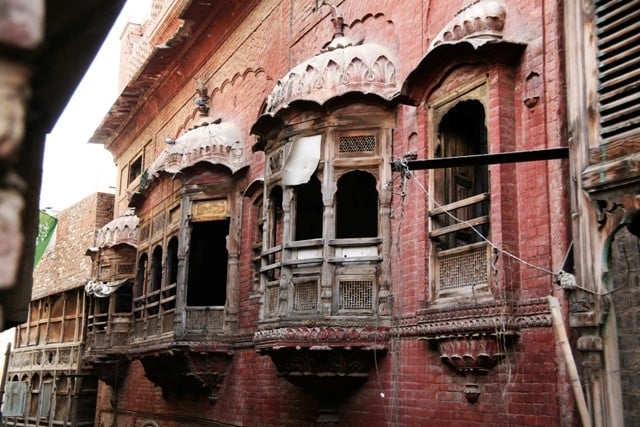
The contribution of Lala Mela Ram

Bengal renaissance and the transformation that it entailed in the early 19th century is a theme of vital importance for the historians of South Asia. Permanent settlement of Bengal exhilarated the pace of transformation by undercutting the old order -- with zamindars having unequivocal sway over the resources, both human as well as material. Introduction of modern education system, new rules of governance and putting together of communication network were the key factors which played a permeating role in the re-invention of Bengal.
The emergence of Bhadralok (middle class or bourgeoisie) as a class was the most decisive outcome of the transition that occurred as a result of Bengal renaissance. Bhadralok, as shown by several scholars including Partha Chatterji, in the subsequent years, came to foment the sentiments of resistance against British imperialism. But more importantly that class became a conduit whereby Bengal was transposed from medieval to the modern epoch.
What I tend to argue in today’s column is that a similar sort of transition took place in the Punjab after its annexation in 1849. Under John Lawrence and his successors, it underwent a period of thorough transition, opening up as a result, new spaces and opportunities for ambitious individuals and communities to prosper. Hindu Khatries were the main beneficiaries of the newly emergent situation. The era of modernity unleashed under the British brought Khatries as was the case of Bhadralok in the Bengal, to the centre stage of socio-economic setting of the colonial Punjab.
Read also: The face of modern Punjab
The case of Mela Ram and his son Lala Ram Saran Das from Lahore is an illustration of that phenomenon of Punjabi bourgeoisie (you may read it Khatri too but Punjabi bourgeoisie by no means is restricted to Khatris) rising to prominence.
Lala Mela Ram was born in 1832 to Diwan Dhanpat Rai, a scion of a family which once was favourably poised during the days preceding Maharaja Ranjit Singh. Mela Ram’s grandfather Diwan Das Mal flourished from 1747 to 1798 as a Commander of the Artillery under the Bhatties. The Zamzama, a historic cannon installed at the Mall Road, was then under his command. A person of multiple talents and valour, Diwan Das Mal achieved many distinctions which brought him great respect in the State. He died in 1798 when his only son Diwan Dhanpat Rai was only two.
Shortly afterwards, Ranjit Singh marched on Lahore and established his rule over the Punjab. In the changes that followed, all the jagirs and properties of the Diwan family were confiscated and many of the family members were massacred. His maternal grandfather secretly took Dhanpat Rai away from Lahore to Batala, where he brought him up in obscurity and in relative poverty. Dhanpat Rai grew up in difficult circumstances. Mela Ram was born to him as a second son, Lala Ram Dyal being his eldest offspring. But the return of the fortunes and prestige of the family was mainly due to his younger son, Mela Ram, during whose life-time the Punjab passed from the domain of the Khalsa to that of the British.
Mela Ram demonstrated extraordinary courage and adaptability to take advantage of the changed situation which he turned to his favour.
Read also: The face of modern Punjab III
Equipped with zeal and energy which he possessed in abundant measure, coupled with earnest desire to revive the old glories of his once magnificent family, Mela Ram got on with his practical life as contractor. By dint of hard work and integrity, he rose to the top of his profession. He took the entire contracts of Amritsar-Pathankot Railway, including iron-work, sleepers and masonry, which he finished within the stipulated time. That was no less than an extraordinary feat for which the government granted him a special reward of Rs50,000.
For the services he rendered, in February 1869, Mela Ram attained the distinction of being appointed a "Darbari" and seventeen years later was honoured with the title of "Rai Bahadur". Later on, he became an industrialist and set up the first textile mill in Lahore adjacent to Data Darbar, where several hundreds of people sought employment. Currently, that space is with Hizb-i-Ahnaf, and is probably under the legal ownership of Evacuee Trust Property Board (ETPB).
Like several other prominent people from Khatri caste i.e. Harkishen Lal, Ganga Ram, Mela Ram too had a charitable character. Besides, he lent financial support to various institutions along with helping poor sections of the society. He got a water tank built near the Railway Station and sunk many wells in different towns of the Punjab.
Such ventures like a hostel to feed the poor and a shop to provide flour to the destitute were really commendable. He generously donated large sums to the public sector institutions like Delhi Hospital (Rs24,000 in 1864), Central Training College, Lahore (Rs15,000 in 1886) and Lady Dufferin Hospital for Women (Rs15,000 in 1886).
That is how these fellows left an enviable legacy. However, what distinguished Mela Ram and also his son Ram Saran Das was the social plurality which they demonstrated. Electrifying Data Darbar was one big illustration of their non-communal character. Then, at their house (Lal Haveli), all the occasions and festivals were celebrated with equal enthusiasm. Poetry symposiums (Mushairas) were held under their patronage at regular intervals.
Mela Ram is said to have donated 36 acres of land for the building of Lahore Zoo, which in itself was a great act of generosity. Lala Mela Ram died on April 10, 1890 leaving behind him two minor sons, the elder being Lala Ram Saran Das, who will be the topic of the next column because he was an important figure in his own right.
(To be concluded)